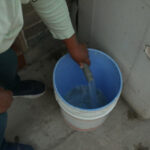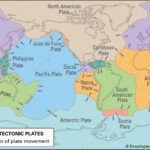When planning a trip to Mexico, one of the first questions that might cross your mind is a fundamental one: Is Mexico A State? It’s crucial to understand that Mexico is not a state in the way that, for example, California is a state within the United States. Instead, Mexico is a country, officially known as the United Mexican States. It is a federal republic composed of 32 entities, 31 of which are states and one is Mexico City. Just like the United States is made up of individual states, Mexico is similarly organized into its own set of states, each with its own unique characteristics and, importantly for travelers, varying levels of safety.
Understanding the political structure of Mexico as a republic of states is key to interpreting travel advisories and ensuring a safe trip. The U.S. Department of State regularly issues travel advisories for Mexico, and these advisories are often broken down by state, reflecting the diverse safety landscapes across the country. This detailed approach is essential because safety conditions can change dramatically from one Mexican state to another.
This guide, drawing from the latest U.S. Department of State information, provides an overview of the safety levels in different Mexican states to help you plan your travel with greater awareness and security. It’s important to remember that while Mexico offers incredible cultural experiences, historical sites, and beautiful landscapes, being informed about safety is paramount for a positive journey.
States to Reconsider Travel To
Several states in Mexico are categorized under “Reconsider Travel,” indicating a higher level of risk that travelers should carefully consider before visiting. This advisory level is due to significant concerns regarding crime and, in some cases, kidnapping.
-
Baja California: This border state is known for transnational criminal organizations involved in drug trafficking and human smuggling. Violent crime and gang activity are common, particularly in non-tourist areas of Tijuana. While tourist areas like Ensenada and Rosarito are still visited, travelers should be vigilant.
-
Chiapas: Crime is a significant concern in Chiapas. Certain areas, particularly in the southeastern region and the municipality of Ocozocoautla, have restricted travel for U.S. government employees due to safety risks.
-
Chihuahua: The state experiences high levels of violent crime and gang activity, including targeted assassinations and territorial disputes between criminal groups. Even areas frequented by tourists and U.S. government employees have seen violent incidents. Cities like Ciudad Juarez and areas including Copper Canyon require careful consideration.
-
Guanajuato: Gang violence, often related to fuel theft, is prevalent, especially in the southern and central parts of the state. The southern region has a high murder rate linked to cartel violence. Popular tourist destinations like San Miguel de Allende and Guanajuato City are within the state, but the advisory level encourages travelers to be aware of the broader safety concerns in the region.
-
Jalisco: Parts of Jalisco, including areas around Guadalajara and the border with Michoacan, see significant violent crime and gang activity. Guadalajara itself has experienced territorial disputes between criminal groups even in tourist zones. Puerto Vallarta and the Riviera Nayarit, while popular, are located within a state with this advisory level.
-
Morelos: Violent crime and gang activity are present in parts of Morelos. Kidnapping is also a concern in this state, which is located just south of Mexico City.
-
Sonora: As a key location for international drug trade and human trafficking, Sonora experiences widespread violent crime. Kidnapping is a risk, and travelers are advised to be highly aware of their surroundings throughout the state, including in tourist areas like Hermosillo and Puerto Peñasco.
States Where Travel is Not Recommended (Do Not Travel)
For a few states, the U.S. Department of State advises “Do Not Travel.” This is the highest advisory level, indicating extreme safety risks.
-
Colima: Violent crime and gang activity are widespread in Colima. Most homicides are linked to cartel activity, and bystanders have been caught in the crossfire. Kidnapping is also a serious concern throughout the state, with travel for U.S. government employees severely restricted.
-
Guerrero: Crime and violence are widespread across Guerrero. Armed groups operate outside government control in many areas, setting up roadblocks and posing a threat to travelers. This advisory includes major tourist destinations like Acapulco, Ixtapa, Taxco, and Zihuatanejo.
-
Michoacan: Crime and violence are pervasive in Michoacan. Travel for U.S. government employees is significantly limited, and large parts of the state, including areas of the Monarch Butterfly Reserve within Michoacan, are off-limits.
-
Sinaloa: Violent crime is widespread in Sinaloa, home to powerful criminal organizations. Travel for U.S. government employees is restricted to very specific areas within Mazatlan and Los Mochis, with other parts of the state considered too dangerous.
-
Tamaulipas: Organized crime is rampant in Tamaulipas, particularly along the northern border. Gun battles, murder, armed robbery, kidnapping, and extortion are common. Criminal groups frequently target buses and private vehicles. The advisory is especially severe for overland travel and areas outside of a limited radius around the consulates in Matamoros and Nuevo Laredo.
-
Zacatecas: Violent crime, extortion, and gang activity are widespread in Zacatecas. Kidnapping is a significant risk, and travel for U.S. government employees is heavily restricted to Zacatecas City itself, with overland travel to the city not permitted.
States Where Increased Caution is Advised
The majority of Mexican states fall under the “Exercise Increased Caution” advisory. This means that while there are risks, they are generally considered manageable with appropriate awareness and precautions. These states still experience criminal activity and violence, but often to a lesser extent or in specific areas compared to “Reconsider Travel” or “Do Not Travel” states.
States in this category include: Aguascalientes, Baja California Sur, Coahuila, Durango, Hidalgo, Mexico City, Mexico State, Nayarit, Nuevo Leon, Oaxaca, Puebla, Queretaro, Quintana Roo, San Luis Potosi, Tabasco, Tlaxcala, and Veracruz.
In these states, it is advisable to:
- Be aware of your surroundings, especially in less frequented areas and at night.
- Avoid displaying signs of wealth.
- Exercise extra vigilance at banks and ATMs.
- Use toll roads when possible and avoid driving alone or at night.
- Be cautious when visiting local bars, nightclubs, and casinos.
For popular tourist destinations within these states, such as Cancun, Playa del Carmen, Tulum in Quintana Roo, Oaxaca City and Puerto Escondido in Oaxaca, or San Luis Potosi city, increased caution is still recommended, particularly after dark. However, with sensible precautions, many visitors have safe and enjoyable experiences in these areas.
States with Normal Precautions
Only two states are currently under the “Exercise Normal Precautions” advisory, the lowest level:
- Campeche
- Yucatan
These states, including popular tourist areas like Merida, Chichen Itza, Uxmal, and Valladolid in Yucatan, are considered generally safe for travel. However, as with any destination, maintaining general awareness of your surroundings is always a good practice.
General Safety Tips for Mexico
Regardless of the state you plan to visit in Mexico, some general safety tips are always relevant:
- Keep someone informed: Share your travel plans with family or friends back home. If traveling alone, let someone know your GPS location if you separate from your group or when taking taxis.
- Use secure transportation: Opt for dispatched vehicles or app-based services like Uber rather than hailing taxis on the street, especially at night.
- Avoid traveling alone: Especially in remote areas, it’s safer to travel with companions.
- Enroll in STEP: The Smart Traveler Enrollment Program (STEP) is a free service that allows U.S. citizens traveling abroad to enroll with the U.S. Embassy and receive important alerts.
- Stay updated: Follow the Department of State and the U.S. Embassy in Mexico on social media for up-to-date information and alerts.
- Prepare for emergencies: Have a contingency plan in case of emergency situations and review the Traveler’s Checklist provided by the Department of State.
Conclusion
Mexico, as a country composed of diverse states, presents a varied landscape in terms of travel safety. Understanding these differences is crucial for planning a safe and enjoyable trip. While some states require extreme caution or are best avoided altogether, others are generally safe for tourists with standard precautions. By staying informed, being vigilant, and following safety guidelines, you can navigate the Mexican Republic and experience its rich culture and beauty while minimizing risks. Always consult the latest travel advisories from the U.S. Department of State or your country’s equivalent before traveling to Mexico, as conditions can change.

